
views
Preparing like a Pro
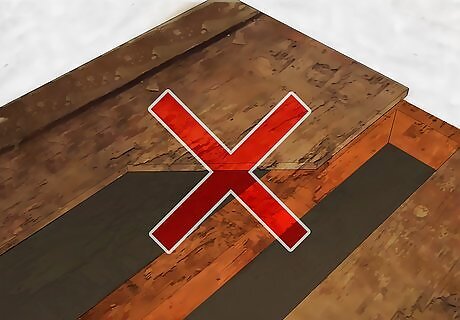
Make sure your base is strong. Before you start tiling, it's important to make sure that the surface the tile is going on to is strong and stable. This is extremely important that this base is structurally sound, otherwise you will soon find cracks in your tile work....and if it's really bad your whole floor or wall could come falling down under the weight! Check your subfloor, cabinets, or wall frame, depending on what you're tiling. Look for signs of mold or rot and try place weight on the boards. If they bow or seem unsteady, they might need to be replaced or reinforced.

Install cement board. You will need to install cement board or a similar product (like a tile backer) before laying down the tiles. Do not use plywood. Cement board will help waterproof your structure and it will also be much more resistant to warping, which helps to prevent cracks. Score the cement board and then snap it cut out the pieces that you need. Screw it down along the edges (every couple inches) and also at the center (3-4 evenly spaced locations should do). Make sure to stagger the joints between different rows of the cement board. This will prevent large cracks from appearing over time. If attaching the cement board to a subfloor, you will need to apply mortar before lying down each panel, and then screwing it into place. Use the method described later in the article for mortaring the tiles.
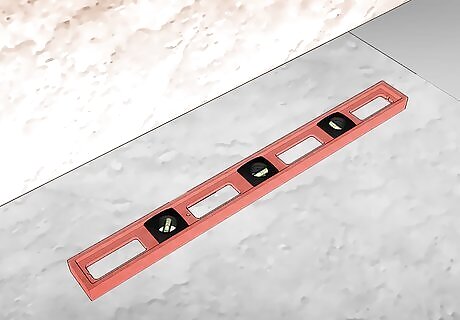
Check for level as you go. Use a carpenter's level to check that the cement board is flat in all directions. You should also continue to check for level as you go through the various layers of the tiling project. If the cement board is not level, you can adjust it with shims from below.
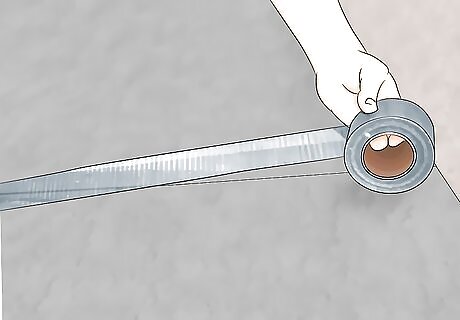
Reinforce the joints. Using strips of fiber mesh tape, first cover the joints in thinset mortar, lay down a strip of tape over the joint, and then lay down another skimcoat of mortar.Once everything is smooth and set, you're ready to go.
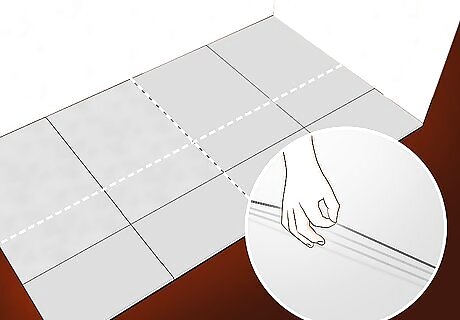
Create the guide lines. Walls in a room are often not square or straight, and ceilings are notorious for being uneven. Use a snap chalk line, a carpenter's level, and a measuring tape to mark some truly straight lines for your tiles to follow. Measure the halfway point on each wall (or edge of a wall, if that's what you're tiling), and then snap a chalk line between opposite sides. Measure to see if the intersections at the middle of the room are square. If not, adjust. You can use this as a base to measure and draw other straight lines and perfect corners in the room. You only need to actually mark the corners or outside edges of where the tiles will go, not mark every row.

Dry fit the tiles to test your pattern. Once you've figured out where your tiles are going to go, dry fit the tiles until you're comfortable with how the pattern looks and how all the tiles should fit together. This is very important if you're using different tiles in a pattern or tiles of a different size. You'll also want to plan where you want to start the tiles, so that the edges look nice. Some tiles will almost certainly need to be cut to fit at the edges, so plan where you want the tiles to start so that the cut, edge tiles look nice and balanced.
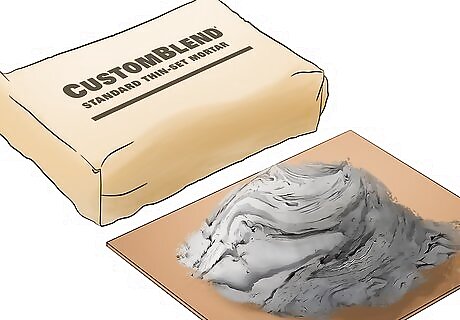
Prepare your mortar. Mix up some thin set mortar according to the manufacturer's instructions for the brand you buy. Generally, you'll have a powder to which you add water. You want the texture of the mortar to be like that of peanut butter. Add the water in slowly and mix as you go, so that you don't get too much water in the mix. You'll also want to let it "slake" or rest after you do the initial mixing. Let it sit for 10-15 minutes and then mix it up again. It's now ready to use.
Laying the Tiles
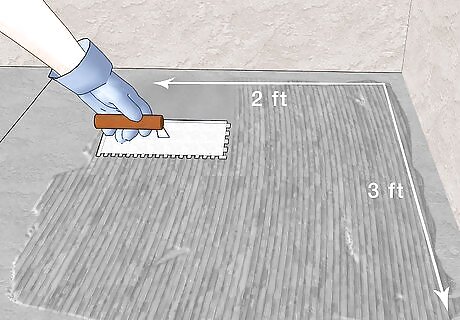
Spread your mortar. Spread mortar in a small area where you will begin to work. Only work with a roughly 2'x3' area at a time. You do not want the mortar to have time to set before you can lay your tile. Using a notched trowel (different sizes may be needed, 3/8" is a good starting point), spread the mortar between sections that you marked with the chalk line. If the mortar rises up between the tiles (to be flush or nearly flush with the tile surface), that means it's too thick or that the ridges need to be shorter. The mortar should be covering the entire tile, if you lift it up after placing it. If when you lift up the tiles you see only lines of mortar on the tile, then the mortar has dried out too much or the bed is too thin and the height of the ridges must be increased. If using tile sheets, use a trowel with smaller notches. This will keep the mortar from coming up through the gaps between the tiles.

Lay your tiles. Lay your tiles onto the mortar, starting at the right corner you marked and following a straight line. Leave gaps of 1/8" where the edge of the tile meets up with the wall or floor. This is to allow room for expansion and movement, as the material naturally changes with its environment. This gap can be covered with grout, molding, or shoe tile.
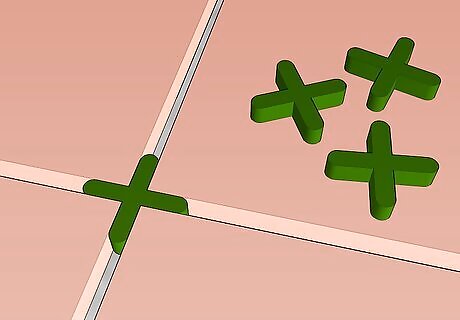
Insert the spacers as you go. Place tile spaces between each tile as you go, or simply use your eyes to estimate if using tile sheets. These spacers are usually places at the corners of each tile and look like the cross shape that is formed by four tiles being next to each other.
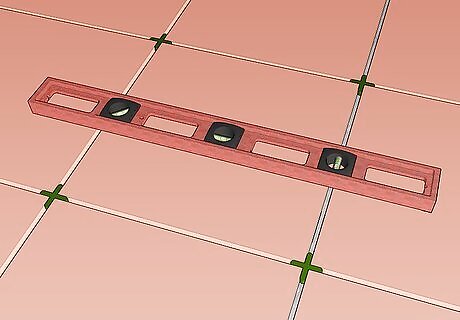
Level the tiles as you go. Use a carpenter's level as you go to make sure that the tiles are level.
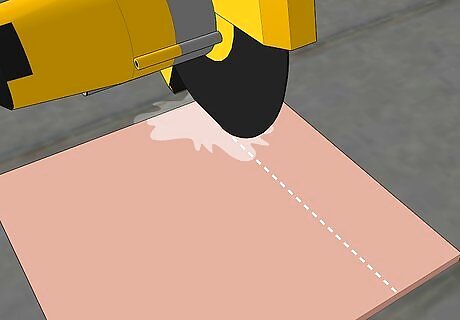
Cut tiles for the edges. Use a masonry wet saw to cut any tiles you need for the corners and edges, carefully measuring them to fit for your particular project. Don't forget to leave the 1/8" gap all around the edge.
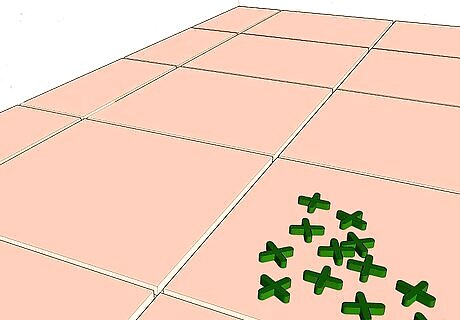
Remove your spacers before doing the grout. Remove the spaces once the mortar has set and you're ready to grout!
Grouting the Tiles
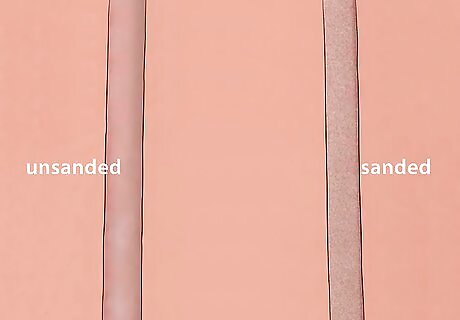
Choose a grout. You'll need to decide between sanded and unsanded grout. Which you choose will depend on the size of the gaps between your tiles. Use sanded grout for gaps bigger than 3mm and unsanded grout for smaller gaps.

Mix the grout. Mix the grout according to the packaging directions. You might want to mix in additives to make it more water resistant or add color that matches better with your tile. Only mix as much as you can apply in about 20 minutes, since you don't want it drying out.
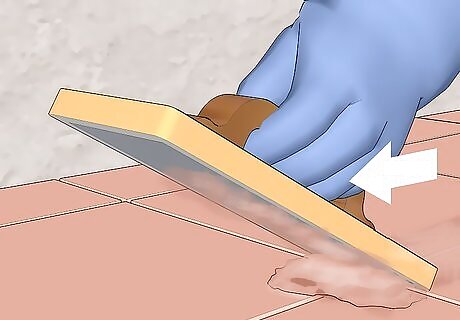
Spread the grout. Using a grout float, spread the grout over the area to be grouted (working in a small area at a time, again). Hold the float at a 45 degree angle and spread across the gaps at an angle as well. Spreading parallel to the grout lines can gouge out the grout. Remove as much of the excess from the tile faces using the grout float as you can at this time.

Let the grout sit for 20 minutes. Let the grout cure for 20 minutes.
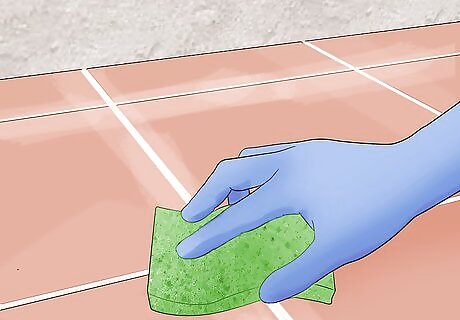
Clean the grout. Using a damp sponge, gently wipe down the tiles and grout lines to remove the excess. Clean just a small area, rinse, wring, and start again. You want to keep the sponge as clean and dry as possible.
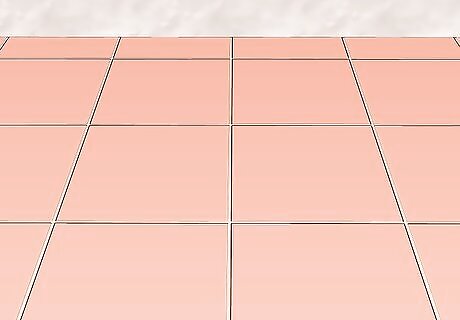
Let the grout cure. Leave the grout to cure for 3 hours before starting the next section.
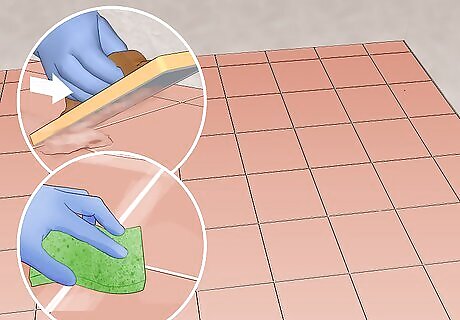
Repeat until the surface is grouted. Keep repeating this process until the entire surface is done. You might want to clean off any remaining residue once the grout has cured using an old sock or dry rag.
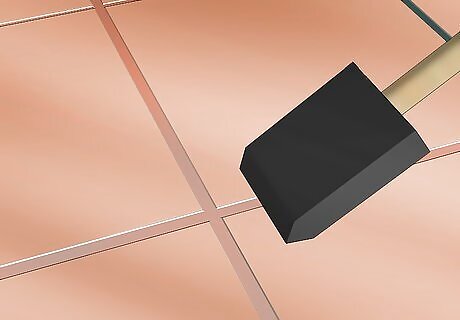
Seal the grout. Seal the grout and then reseal the grout every six months. Each sealant is different but generally they are a wax-like substance which you apply to a rag or sponge and then rub into the grout in a circular motion.



















Comments
0 comment